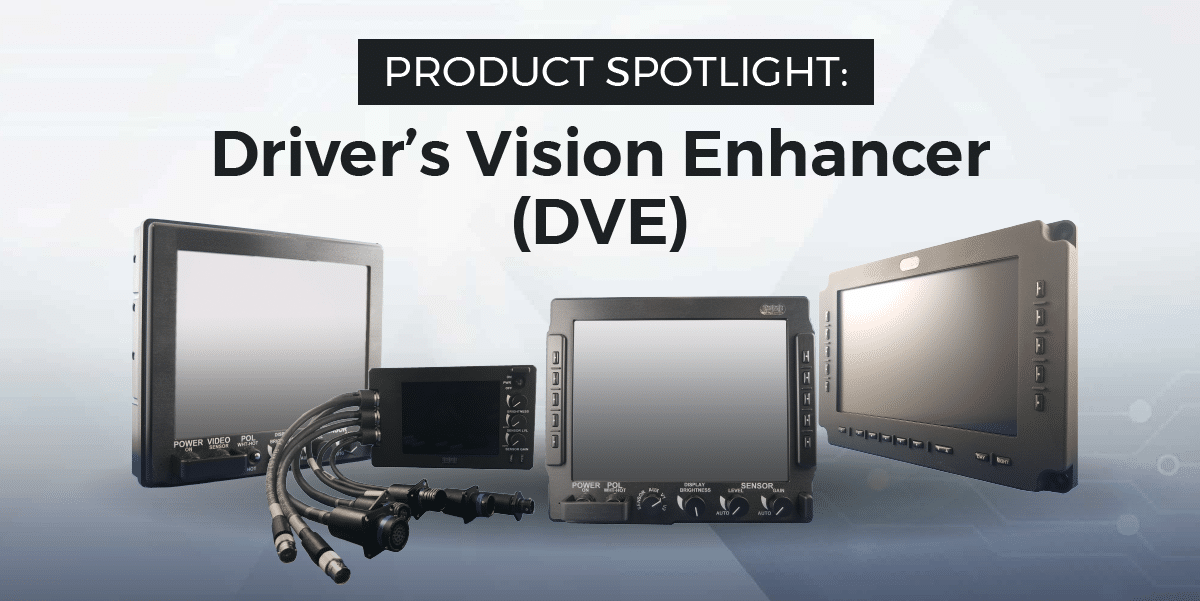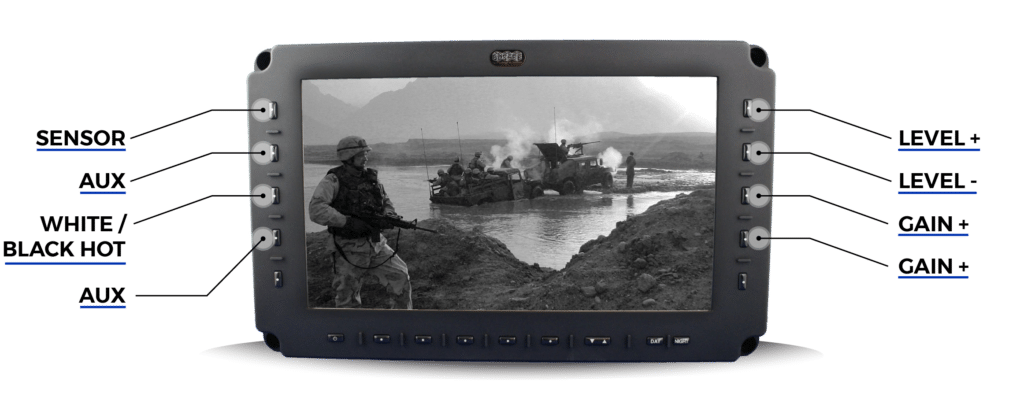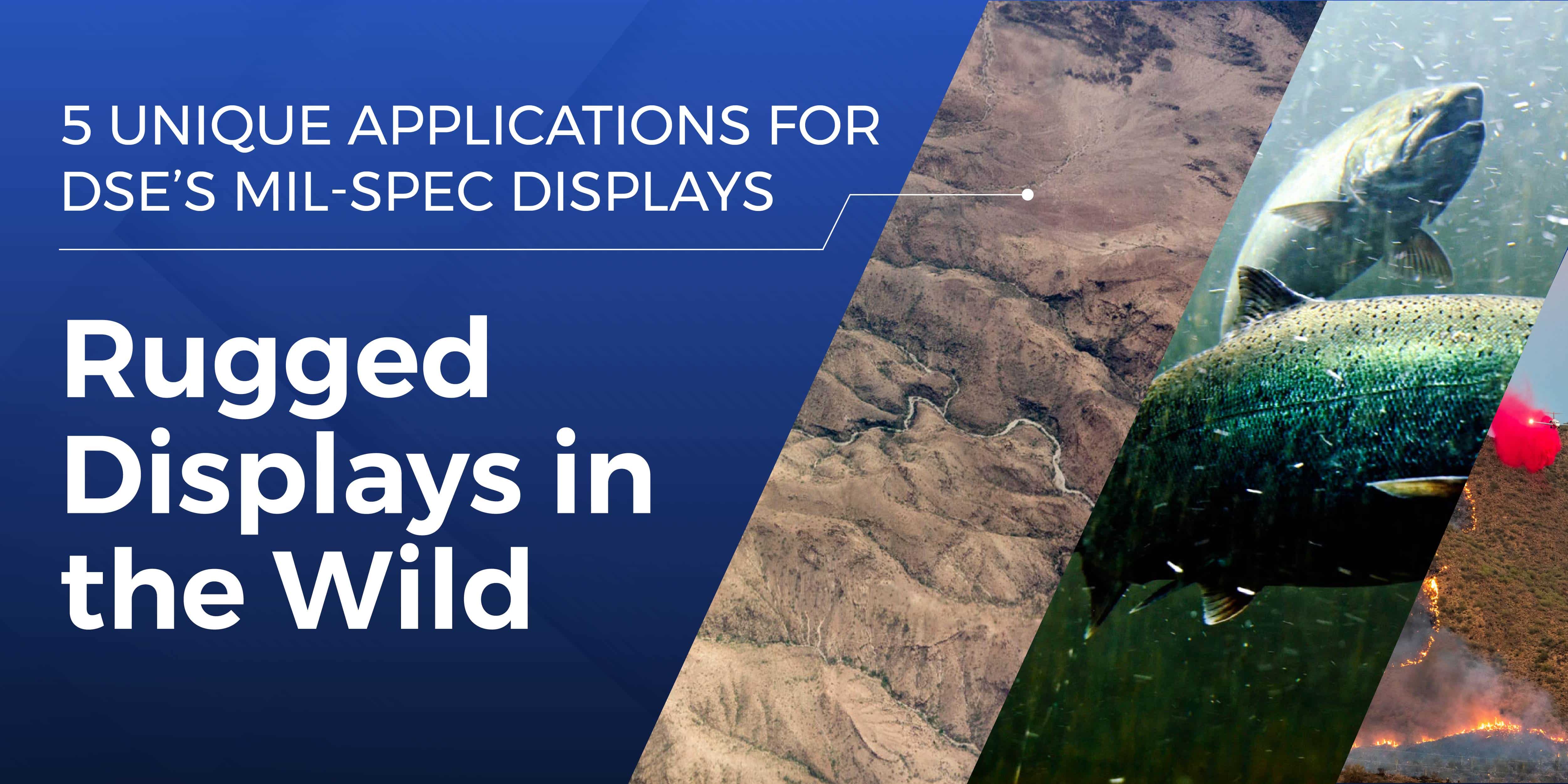Product Spotlight: Driver’s Vision Enhancer (DVE)

Product Spotlight: Driver’s Vision Enhancer (DVE)
When navigating adverse conditions on the battlefield, awareness is key. For decades, DSE’s Driver’s Vision Enhancer (DVE) has helped vehicle operators by delivering visual clarity during defense missions across the globe.
In this product spotlight, we’re taking a closer look at the DVE—both legacy and next-generation solutions—to discover how DSE’s rugged DVEs give vehicle operators a tactical advantage on the battlefield.
Legacy DVE Solutions
Throughout its 30-year history of developing rugged electronics, DSE has supplied leading vehicle programs with legacy DVE solutions. From Amphibious Combat Vehicle (ACV), to the M1 Abrams, Mobile Strike Force Vehicle (MSFV) and more, DSE has delivered government-specified DVE Display Control Modules in the form of three unique product variants.
The DVE10 features a 10.4” form factor and is compliant to MIL-PRF-49256D and ICD A3325865. Its milled aluminum enclosure includes a series of rotary potentiometers allowing for user control over polarity, brightness, level and gain. Its anti-reflective and anti-glare screen is designed for enhanced readability under harsh weather conditions.
Its counterpart, the DVE10VR2 includes the same composite video inputs and outputs, along with two VGA inputs and programmable bezel keys for the control of external systems. The DVE10VR2 can also be configured with a resistive touch screen and XGA resolution.
For those applications that require special SWAP considerations, DSE’s third legacy DVE model, the DVE06, offers the same performance in a compact footprint. At just 6.5”, the DVE06 includes composite video inputs and outputs, one VGA input and XGA resolution.
Among all three legacy DVE models, one thing remains the same: DSE’s commitment to designing and building electronics to withstand the most extreme environmental conditions. All legacy DVE solutions are designed to meet the strict guidelines set out in MIL-STDs 810 and 461, while also maintaining an IP67 rating.

DVE10-FHD
- 1920 x 1080 full HD
- Digital video inputs
- Improved optics
- Programmable Bezel Keys
- Legacy compatibility

DVE10
- 800 x 600 SVGA Resolution
- Analog Video Inputs
- Analog User Controls
- MIL-PRF-49256D and ICD A332586 compliant
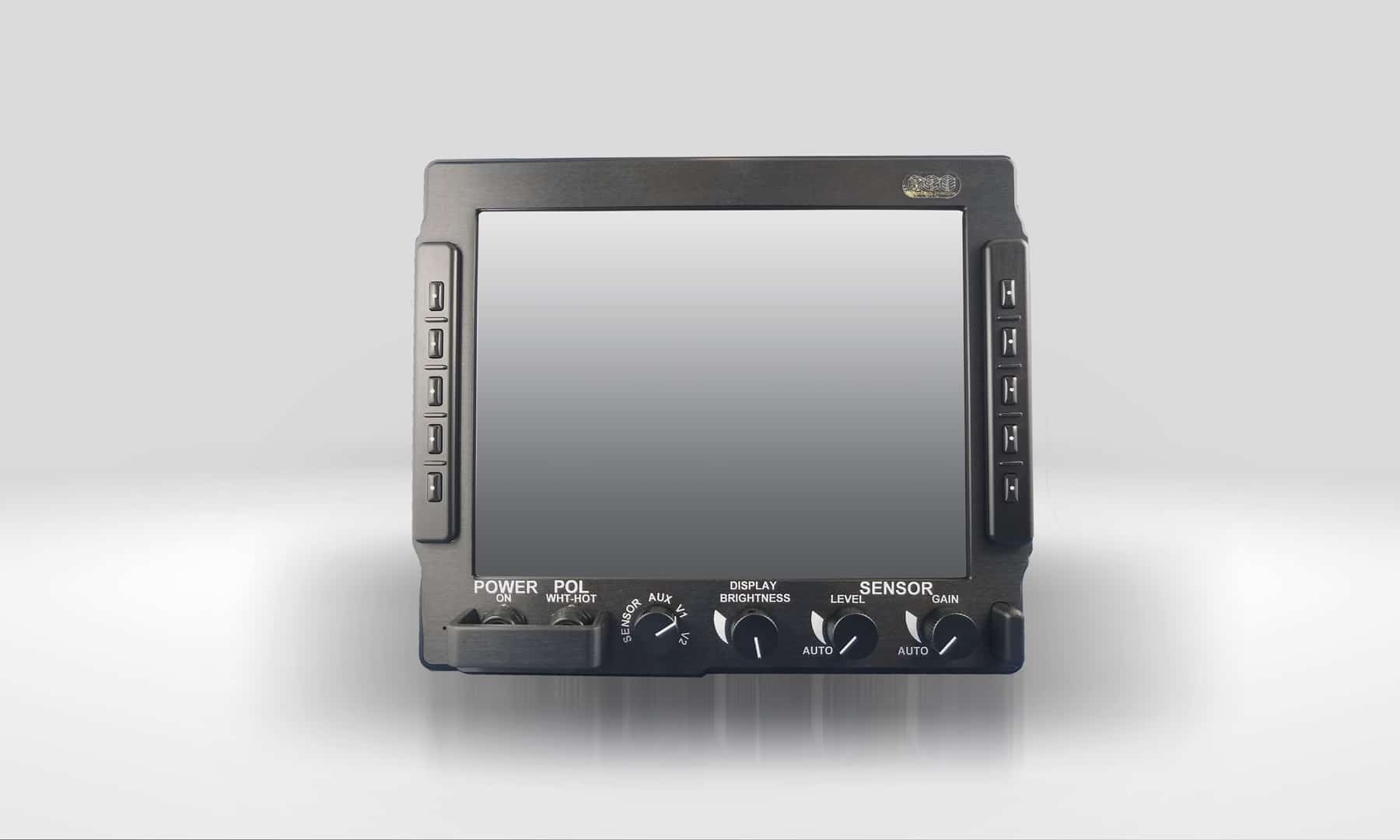
DVE10VR2
- VGA Computer Inputs
- 1024 x 768 XGA Resolution
- Touch screen options
- Programmable Bezel Keys
- Legacy compatibility
The Next Generation DVE
As technology advances, the demand rises for next-generation solutions that meet the needs of a modern military. Among its recent developments, DSE’s DVE10-FHD combines legacy compatibility with enhanced optics and performance.
This unique solution offers 1920×1080 full high-definition resolution along with increased luminance and an enhanced contrast ratio. To ensure mission-critical data is transmitted swiftly, the DVE10-FHD features digital video inputs for next generation HD-SDI cameras as well as analog options.
The hard anodized enclosure of the DVE10-FHD is outfitted with a series of programmable bezel keys that enable user-defined control over the device and systems, as well as controls for sensor input, level, gain and polarity.
With the ultimate goal of ensuring the safety of troops on board, the DVE10-FHD delivers the real-time, visual clarity and situational awareness needed on the battlefield in high definition.
Leveraging FHDRM’s Proven Capabilities
When designing the next-generation of DVE products, DSE turned to its proven FHDRM product line to engineer a product combining legacy DVE features with advanced optical performance. FHDRM, one of DSE’s most advanced rugged displays, set the foundation for engineering the DVE10-FHD.
Since its introduction in 2018, FHDRM has become a staple product in DSE’s family of rugged electronics, supporting aerospace and defense applications such as fixed-wing aircraft, ground vehicles, rotary aircraft, weapon systems and more.
FHDRM’s optical performance sets it apart from other rugged display units, offering full high-definition 1920×1080 resolution, high brightness and an enhanced contrast ratio. Beyond its optical features, FHDRM has also become known for its compliance with MIL-STDs and ability to withstand rugged conditions. Recently the FHDRM was put to the test in a third-party laboratory to examine its response to rapid decompression, operational shock, altitude and much more. You can read more about FHDRM’s performance in the lab by reading our blog post here.
Conclusion
As technology continuously evolves, so do the solutions leveraged on the battlefield. With legacy and next-generation approaches to the DVE, DSE offers products tailored to the current needs of its partners, while still developing solutions for the military of the future.
To learn more about DVE10, DVE10-FHD or any of DSE’s rugged solutions, please contact info@digitalsys.com.
Rugged Displays in the Wild: 5 Unique Applications for DSE’s MIL-Spec Displays

Rugged Displays in the Wild: 5 Unique Applications for DSE’s MIL-Spec Displays
For nearly 30 years, DSE has designed and built rugged displays meant to withstand the most extreme environments across the globe. While DSE’s rugged displays are known primarily for defense and aerospace applications, the ability to perform under extreme conditions has proven to be useful for a variety of industries and integrations.
In this blog post, we’ll explore some of the lesser-known applications that DSE rugged displays have supported throughout our company’s history.
Law Enforcement
It’s not uncommon for DSE rugged displays to find their home in aerospace applications. In fact, the FHDRM—one of our signature rugged displays—was recently put to the test in a series of third-party laboratory tests before being fielded in an ISR application on a multi-use fixed-wing aircraft.
But many may not know that DSE rugged displays also play a role in federal agencies and law enforcement aircraft. From rescue missions to identifying, tracking and capturing dangerous suspects, DSE rugged displays have aided in critical missions for law enforcement agencies and even the United States Coast Guard.
Fighting Wildfires

Wildlife Conservation

By monitoring and tracking movement at various watersheds, biologists are able to analyze migration, survival rate and human interruptions in order to encourage healthy, sustainable fish populations.
Open-pit Mining

DSE’s ALPHA rugged mission computer is often used in these heavy industrial applications, but many may not know that DSE rugged displays have also proven useful in mining applications. Our displays have been integrated on giant mining trucks—661 tons to be exact!
Aerial Mapping
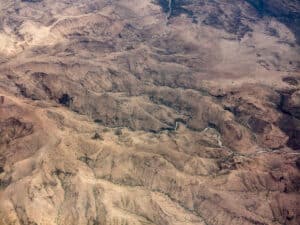
DSE displays have supported aerial mapping applications in Africa, in a process where visual imagery captured by air is then overlaid with property boundaries, GPS and other inputs. This allows researchers to chart geophysical terrain for mining, exploration, fleet management and other governmental exercises.
A rugged display designed for the battlefield is uniquely positioned to take on the challenges of any extreme environment. DSE’s long history of engineering solutions to meet the needs of aerospace and defense applications has resulted in a deep product catalog of MIL-Spec and MIL-STD compliant rugged displays that can be found in unique applications across the world. From fighting fires to monitoring fish populations and much more—DSE’s rugged displays help its partners achieve success no matter what the mission has in store.

